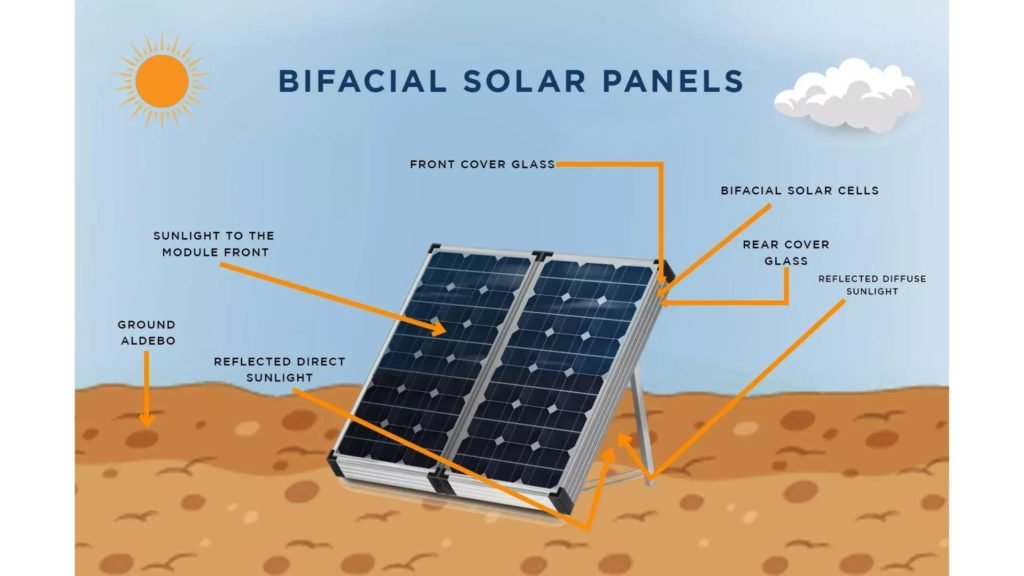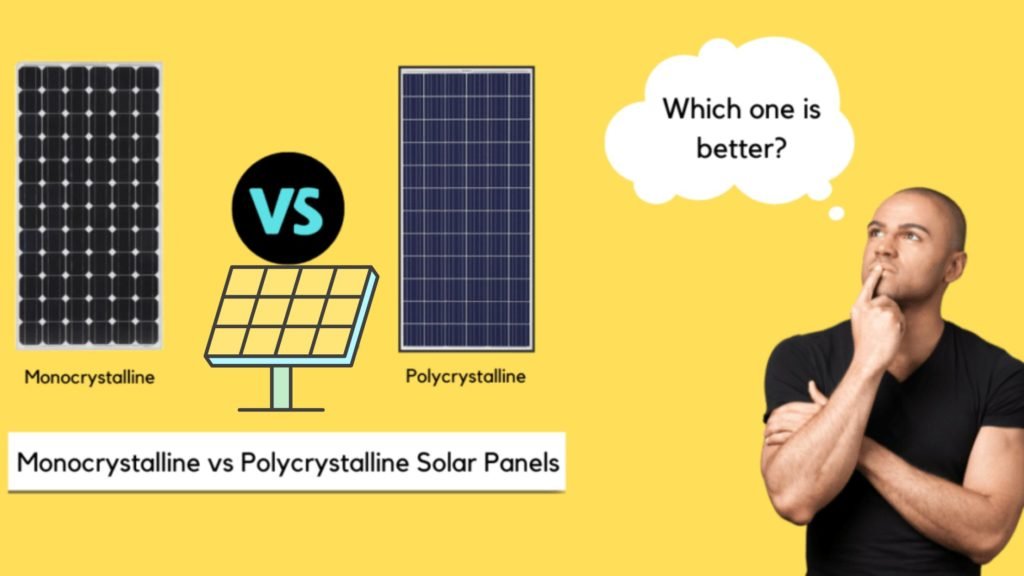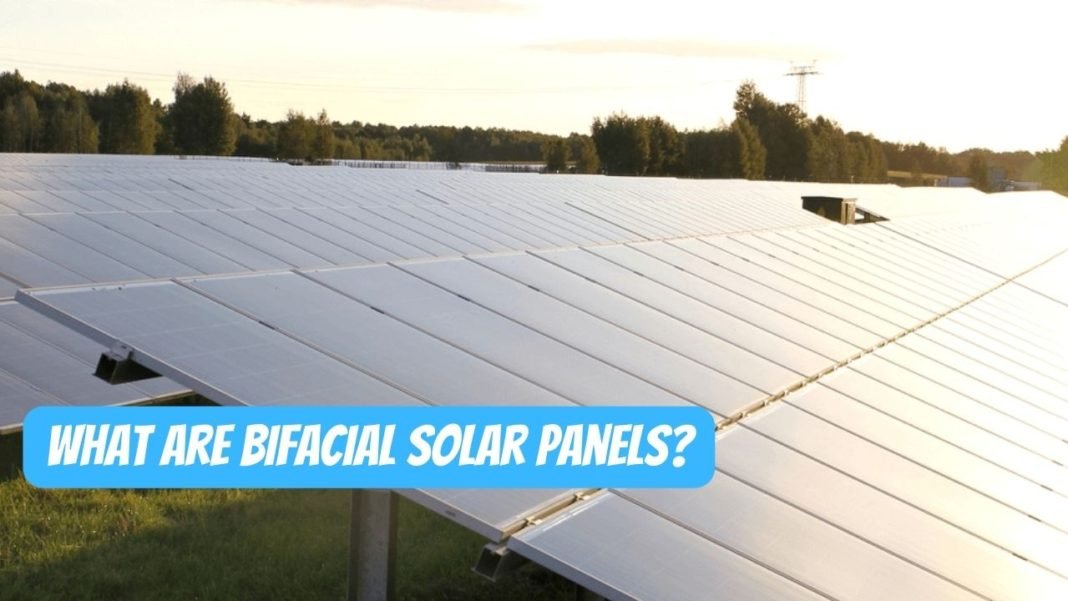Harnessing the power of the sun for energy has been a rising trend for a few years now. And why not? It’s a clean, renewable, and abundant source of power. But have you heard about bifacial solar panels? These energy wizards are taking solar technology to a whole new level.
Before we dive into the nitty-gritty, let’s clarify what we mean by bifacial solar panels.
Understanding Bifacial Solar Panels
Bifacial solar panels are essentially double-sided solar panels. Unlike traditional panels, which only harness sunlight from one side, bifacial solar panels capture light from both sides. Imagine a sponge, absorbing droplets of water not just from the top, but also from the bottom. That’s what bifacial solar panels do with sunlight!
The Bifacial Boom: How Do They Work?
With this understanding, let’s dive into the workings of these solar marvels. Checkout below the science behind Bifacial solar panels and how do they work.
Harnessing Light: The Two-Way Process
Traditional or monofacial solar panels work by absorbing sunlight on their front surface and converting it into electricity. Bifacial panels, on the other hand, also capture light reflected off the ground or nearby surfaces onto their rear side, adding to the power generated.

The Science Behind the Magic
This is all possible due to the use of semiconductors with special properties, allowing them to absorb light on both surfaces. When sunlight hits the panel, it triggers the movement of electrons, creating a flow of electricity. This process is known as the photovoltaic effect.
Why Bifacial Solar Panels?
You might wonder, “Sure, they sound cool, but what’s the real-world application?” Let’s break that down.
More Power, Less Space
Bifacial solar panels, due to their double-sided light absorption, can produce up to 25% more energy than traditional panels in the same space. That’s like getting an extra quarter of a pizza for free!
Adaptability and Versatility
Due to their ability to absorb reflected light, bifacial solar panels are great for installations near light-reflecting surfaces like snow, water, or white rooftops.
Durability and Longevity
Generally, bifacial solar panels are made with durable materials and come with longer warranties. This means a prolonged lifespan and less frequent replacements.
The Flip Side of the Coin: Challenges with Bifacial Solar Panels
Like any technology, bifacial solar panels are not without their challenges.
Installation and Maintenance
Because of their unique design, installation and maintenance can be more complex and potentially more costly than traditional panels.
Varied Performance
Performance can vary greatly depending on factors such as the level of reflected light and installation angle.
Is It Worth Investing in Bifacial Solar Panels?
This is probably the question you’ve been itching to have answered. So, let’s get down to it.
Comparing Costs and Benefits

When considering bifacial solar panels, it’s crucial to weigh the higher upfront costs against the potential for increased energy production and longer lifespan.
Suitability and Considerations
You must also consider your specific circumstances, such as available space, geographical location, and the surrounding environment’s reflectivity.
Bifacial Solar Panels: The Future of Solar Energy?
So, what’s the future holding for bifacial solar panels?
Emerging Trends and Predictions
Despite the challenges, the market for bifacial solar panels is expected to grow significantly in the coming years, thanks to their higher efficiency and versatility.
Innovation and Advancements
Ongoing research and technological advancements are expected to further enhance the performance of bifacial solar panels and make them more accessible.
To conclude, bifacial solar panels are a promising development in the renewable energy sector, providing more efficient and versatile solar energy solutions. But, like any technology, they are not without their limitations. It’s essential to assess your individual circumstances and needs before investing in this cutting-edge technology.
Now you have a better understanding of bifacial solar panels and the advantages of using them. Now comes the other side of it.
The Bitter Pill: Disadvantages of Bifacial Solar Panels
Let’s not beat around the bush here. Bifacial solar panels, although groundbreaking, have their fair share of challenges. Installation can be a headache. Without a doubt, these panels demand a more intricate setup than their traditional counterparts, owing to their double-sided design. But wait, there’s more. The performance of bifacial solar panels can be hit-or-miss, heavily depending on the level of reflected light and the angle of installation. Lastly, brace yourself for a bigger hole in your pocket; the initial investment is significantly higher than standard panels.
A Head-to-Head Battle: Bifacial Solar Panels vs Monocrystalline

Now, the million-dollar question: How do bifacial solar panels stack up against monocrystalline panels? Well, it’s a game of give and take. Monocrystalline panels, the old guard of solar power, offer easier installation and lower upfront costs. But hang on, don’t count the bifacial panels out just yet! While they may lose out in initial affordability, they race ahead with their ability to harness more power, and let’s not forget their durability which is often superior to the monocrystalline alternative. So, it’s a bit of a seesaw, and the best choice truly depends on your specific circumstances.
Cream of the Crop: Best Bifacial Solar Panels
Ready to delve into the world of bifacial solar panels? Hold your horses! It’s crucial to know which ones are top-notch. While it’s challenging to pinpoint a single ‘best’ model—given how rapidly solar technology evolves—certain manufacturers have been turning heads. LG, with their NeON 2 BiFacial, and Prism Solar, with their Bi60 module, are currently lighting the way in the bifacial solar panel industry.
The Whole Shebang: Bifacial Solar Panels Advantages and Disadvantages
Alright, let’s get the full picture. Bifacial solar panels come with an array of benefits. These champs can generate more power by harnessing light from both sides, offer remarkable durability, and show a knack for adaptability. However, as we discussed earlier, they aren’t without their drawbacks. Their installation can be a doozy, their performance can be a mixed bag, and their upfront cost can make you squirm. The key is to balance these pros and cons against your individual needs and resources.
Shop ’til You Drop: Bifacial Solar Panels for Sale
Want to bag a bifacial solar panel? You’re in luck! Bifacial solar panels are up for grabs in several leading solar equipment stores and online marketplaces. But remember, buyer beware! Do your due diligence, consider multiple vendors, and read reviews before making the plunge.
The Core of the Matter: Bifacial Solar Cell
The heart and soul of a bifacial solar panel is, of course, the bifacial solar cell. These tiny powerhouses, embedded within the panel, are what make the magic happen. The secret sauce is their unique semiconductors that allow them to absorb light on both sides, giving the whole panel its bifacial character. Who knew something so small could pack such a punch!
Power Packed: Bifacial Solar Panels Efficiency
Here’s the showstopper: bifacial solar panels can produce up to 25% more energy than traditional panels. Talk about punching above their weight! This is all thanks to their ability to absorb sunlight from both the front and rear surfaces, making them a beacon of efficiency in the world of solar energy.
The People’s Verdict: Bifacial Solar Panels Review
What’s the word on the street about bifacial solar panels? The consensus is positive, for the most part. Users love the higher power generation and the durability these panels offer. However, the initial cost and the tricky installation have left some users in a pickle. As with any product, reviews should be taken with a grain of salt and used as a piece of a larger puzzle when considering an investment. After all, one man’s meat can be another man’s poison!
So, are you ready to embrace the future with bifacial solar panels?
FAQs:
Q1: Is bifacial solar panels good?
A1: Bifacial solar panels are excellent in the right context. They can generate up to 25% more energy than traditional panels, are often more durable, and perform well in environments with high light reflectivity. However, they do require a more complex installation and cost more upfront.
Q2: What does bifacial mean in solar?
A2: Bifacial, in solar terms, refers to the ability of a solar panel to absorb sunlight from both sides—front and back—as opposed to just one side, as with traditional solar panels. This dual absorption allows for greater power generation.
Q3: What is bifacial technology?
A3: Bifacial technology in the solar industry refers to solar panels or cells that can capture and convert sunlight from both sides into electricity. This is made possible through the use of special semiconductors within the solar cells.
Q4: What is bifacial vs mono?
A4: Bifacial solar panels absorb sunlight from both sides, potentially generating up to 25% more power than monofacial panels, which only absorb sunlight from one side. However, monofacial panels are often cheaper and easier to install.
Q5: How much do bifacial solar panels cost?
A5: The cost of bifacial solar panels can vary greatly based on factors like the brand, model, and where you’re purchasing from. On average, they tend to be more expensive than traditional solar panels due to their advanced technology and increased power generation capabilities.
Q6: Are bifacial solar panels worth it?
A6: Whether bifacial solar panels are worth it or not largely depends on your specific circumstances. If you have a high-reflectivity environment and can make use of the increased power generation, then they can be a worthwhile investment, despite the higher upfront cost and complex installation.
Q7: Are bifacial solar panels any good?
A7: Yes, bifacial solar panels are good in terms of efficiency and power generation. They can capture sunlight from both sides, which allows them to generate more electricity than traditional solar panels. They also tend to be more durable.
Q8: Which is better, bifacial vs monofacial?
A8: It’s not a straightforward answer as it really depends on your specific needs and circumstances. Bifacial panels offer higher power generation and durability, but come with higher costs and installation complexity. Monofacial panels, while less powerful, are more affordable and easier to install.
Q9: What is the lifespan of bifacial solar panels?
A9: The lifespan of bifacial solar panels is generally longer than traditional panels. With proper maintenance, they can last for 25 to 30 years, or even more. However, the exact lifespan can vary based on factors like the quality of the panel, the installation, and the environment.
Q10: Do bifacial solar panels increase efficiency?
A10: Absolutely! Bifacial solar panels can generate up to 25% more electricity than monofacial panels. This is because they capture sunlight from both sides, increasing the overall efficiency of the panel.
Q11: Can you use bifacial solar panels on a roof?
A11: Yes, you can use bifacial solar panels on a roof, especially if the roof surface is reflective. However, their dual-sided design means they often perform better when raised off the ground, allowing sunlight to reach the rear side of the panel.












